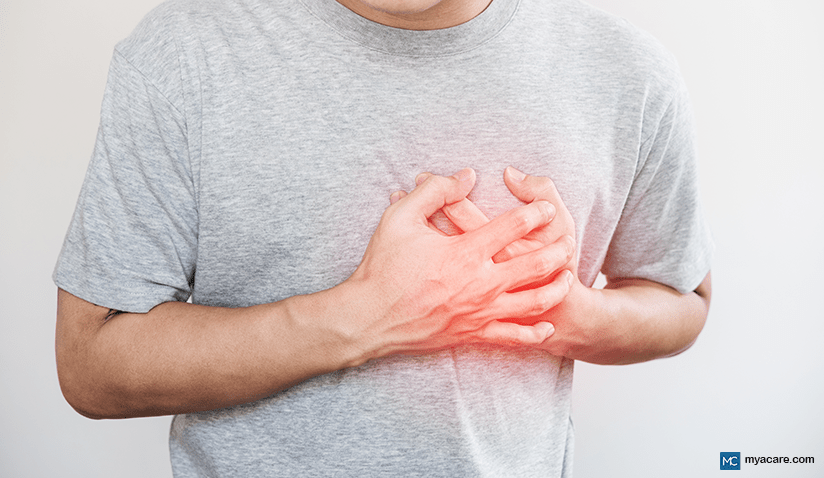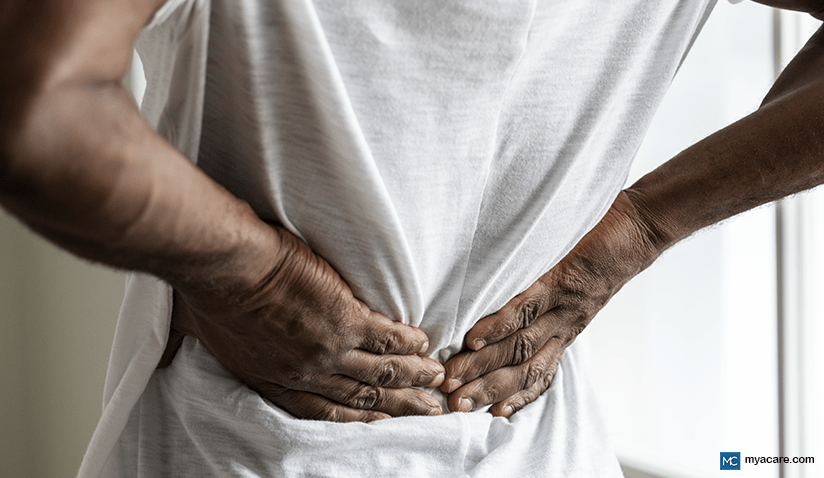REVIEW OF 5 CLASSIC COSMETIC SURGERIES & INVASIVE PROCEDURES

Medically Reviewed and Updated by Dr. Rosmy Barrios - July 23, 2024
With the advancement of surgical techniques and a better understanding of how the body maintains a youthful appearance, cosmetic surgery has certainly made it a long way from where it began.
In spite of the lingering promise of progress, no surgery is without risk and that is why the majority of people are rather turning to less invasive techniques in order to bolster their aesthetic appeal. It’s vital to consult with a cosmetic specialist about the risk involved in your specific case as well as to discuss any non-invasive alternatives before choosing a surgical option.[1]
Potential Side Effects of Cosmetic Surgery
As with all forms of surgery, a recovery period during which the treated area may feel tender or go numb, swell, appear red and inflamed ought to be expected. It can take several weeks for the final results to emerge in line with the body’s natural healing processes.
Mild scarring as a result of surgery is the most common side effect and is usually unavoidable. In some people, the scar fades with time and in others, further cosmetic interventions are required.
Other potential side effects may include:
- Undesirable outcomes resulting in further surgery for removal and/or replacement
- Excessive scarring
- Discoloration of skin
- Post-operative infections
- Temporary fatigue during recovery
- Unprecedented immune reactions (symptoms can vary from head to toe from person to person)
Contraindications: Who Should NOT opt for Aesthetic Surgery
As a rule of thumb, healthy people benefit the most from aesthetic surgery.
In general, those with auto-immune disorders, immune compromise or other forms of chronic disease should not opt for cosmetic surgery. Smokers and those on blood-thinning medications are also at a higher risk for post-surgical complications.[2] While caution is necessary, cosmetic surgery is not entirely contraindicated for individuals with a heart condition or an arterial disorder. Each case should be evaluated individually.[3]
Individuals that have recently had an operation should avoid signing up for more in a rush, particularly if the procedure may do away with the need for further surgical intervention to achieve the desired effect.
Plastic surgery is associated with a much higher risk of mental health issues and suicidal ideation, particularly with regard to breast implants in women.[4] This risk typically coincides with other suicide-related risk factors, such as:
- History of psychiatric hospitalization
- Terminal illness or chronic disease that affects appearance (like breast cancer)
- Severe clinical depression
- Antidepressant use
- Divorce
- Increased alcohol and tobacco consumption
Cosmetic surgery is highly contraindicated for the person who matches most or all of the above descriptors.
A good surgeon will screen the client in advance for potential complications, including their suicide risk.
Overview of 5 Sought-After Cosmetic Procedures
Aesthetic implants, facelifts, liposuction, fat grafting and hair transplantation are some of the popular cosmetic procedures. Let us review them in detail below.
1. Aesthetic Implants (breasts and buttocks)
What it is
Perhaps the most widely known cosmetic procedure, surgical implants have been used for decades to enlarge and shape the pectorals (breasts) and buttocks. Breast implants are the most common.
How it works
The surgeon selects the best site for entry that will minimize complications and scarring, as well as the best type of implant for the client’s needs. Standard implants are made from silicon, filled with either saline solution or silicon gel to achieve the desired shape and are available in a few standard shapes and sizes.
Silicon implants have remained the golden standard for permanent augmentation. However, due to the higher risk involved, many have turned to using safer, semi-permanent implants made from their own fat (see fat grafting) or fat-based dermal fillers.
Benefits
- Permanently augments breasts, pectorals or buttocks
- Once off procedure
Best for…
- Enlarging breasts and buttocks
- Enhancing the shapeliness of the treatment areas
- Sagging skin on the breasts or buttocks
- Holding a youthful shape into old age
Duration
Permanent – results last indefinitely, provided there are no complications.
Safety & Tolerability
Implants are usually well-tolerated, yet when compared to other cosmetic procedures, the incidence of complications tends to be much higher. It’s a good idea to research the type of implant you want ahead of time as many of them release heavy metals and other chemicals into the body over time.[5]
On average, fewer complications have been observed from using saline-filled implants, yet the difference is minimal and the risks differ from person to person. Textured implants and implants that are placed behind the pectoral muscles instead of inside the breast are also associated with marginally less risk. Implant delivery via the areolar region (skin around the nipple) has been shown to substantially increase the risk of implant complications[6].
Plastic surgeons often advise clients to opt for additional procedures post-surgery that lower the risk of complications. It’s important to note the following, particularly when considering breast augmentation:
- Professional breast massage is one of the most common suggestions for breast implants in order to avoid capsular contracture, however there is very little scientific data to support this treatment[7].
- The Aspen Rehabilitation Technique and other ultrasound therapies are showing far more promise than breast massage, with superior results and minimal invasiveness[8].
- An implant’s safety can also be improved through lowering contact with the augmented area as implants are prone to bursting open and leaking internally.
Potential Side Effects
Aside from all the common side effects associated with surgery, implant side effects may include:
- Implant rejection
- Bodily displacement of implant materials
- Lump formation
- Skin tissue degradation around the treated area
- Rupture and implant deflation
- Connective tissue disease
- Reproductive problems
- Immune reactions to the foreign material
Side Effects Specific to Breast Implants could include:
- Problems breast feeding
- Capsular contracture[9] (over-production of scar tissue, causing implant deformation and potential pain)
- Breast cancer
NOTE: Bigger Breasts Do Not Equate Happiness
The risk of increased suicidal ideation seems higher in women after receiving breast implants. It’s important to note that changing the way one looks is not going to resolve any deep problems one might be facing. Special consideration should be taken with regard to assessing one’s motivations in this regard before opting for breast enlargement.
2. Facelifts and similar surgical procedures
What it is
Facelifts, body lifts and a few other similar procedures aim to tackle sagging skin (and any resultant wrinkles, scars or stretch marks) through surgical lifting, stretching and manual tightening of the skin. The main aim of many “lift-type” procedures is to lessen the visible signs of aged skin or skin that has lost its shape and structure.[10]
How it works
Strategic incisions are made around the edges of the treatment area before the skin is “lifted” and pulled back. Often the skin is cut away to accommodate a perfect shape and stretch before being grafted back into place.
As in the case of a tummy tuck, some of these procedures may work in tandem with liposuction, dermal fillers and other cosmetic procedures in order to achieve the desired look.
Benefits
- Tightens the skin around the face and neck
- Reduces the appearance of wrinkles
- Corrects the jowls that form around the jawline and cheeks with age
- Helps to bring back youthful facial contours
Best for…
- Enhancing the appearance of aged limp skin
- Gravity wrinkles and jowls
- Redefining areas of loose or stretched skin
Duration
Permanent – can last up to 10 years on average, depending on the biology of the individual.
People with dramatic weight fluctuations may only experience temporary to semi-permanent effects.
Safety & Tolerability
Facelift and body lift procedures tend to be well-tolerated on average, with the former being safer than the latter. Facelifts are associated with a less than 2%[11] chance of complications with similar procedures varying up to nearly 7% in risk. Smokers appear to experience more complications on average.[12]
Post-bariatric surgery, a body lift may seem like an attractive option to deal with excess skin, however there is plenty of evidence to suggest that it will yield unsatisfactory results. In a study conducted on 100 patients who underwent the surgery, 78 experienced complications, of which 56 were minor.[13]
Potential Side Effects
Body lifts can give rise to permanent scarring. In rare cases, hematomas, infections and temporary loss of feeling or hair growth in the area may result.[14]
3. Liposuction
What it is
Liposuction is a surgical procedure that removes fat from a specific area in order to aesthetically shape it[15] [16]. Essentially liposuction is like having a vacuum cleaner inserted into you and having some of the fat sucked out.
This procedure is not a cure for obesity or a casually-implementable weight loss technique, but rather a last resort when all else fails. Weight loss should first be attempted through making healthy changes to one’s diet and lifestyle. Those who struggle to lose weight through diet and exercise should consult with an appropriate healthcare professional, as it could be a symptom of a deeper medical issue.
Liposuction may be used prior to fat grafting or lipogems (fatty dermal filler) treatment or in combination with other procedures. It may also form part of a “mommy makeover” or a tummy tuck (abdominoplasty).
How it works
Your cosmetic doctor will first inject a special solution into the fatty area in order to help make the fat softer and easier to remove. An incision is then made in the appropriate place and a thin tube is inserted which is connected to a liposuction device that proceeds to remove the fat.[17]
Other techniques involve the use of a low-level laser or ultrasound in order to break down or liquefy the fatty tissue. These are better options for sensitive individuals or those who will react to the preparatory injection.
Benefits
- Enhanced shape (provided the skin is in good condition)
- Temporary weight loss
- As fat cells store toxins, it acts as an immediate form of toxin removal
Best for…
- Areas of excess fat that are classically non-responsive to diet and exercise
- Those with firm, elastic skin
- Areas that require 30% or less fat reduction
Duration
Permanent – the fat is removed for good.
NOTE: Liposuction is a purely aesthetic treatment and does not address any potential underlying causes of weight gain. The result is permanent but is not guaranteed to prevent the growth of new fat. [18]
Safety & Tolerability
Liposuction makes up about 15-20% of all cosmetic surgeries, being one of the most popular invasive cosmetic procedures. It has a complication rate of approx. 5%, out of which most experience minor complications. The larger the treatment area is, the greater one’s risk of complication.
In very rare cases, liposuction can be fatal.[19] This is because there is a low risk that some of the fat can escape and give rise to a lethal blood clot in the heart or brain. Consult with your doctor about the risk involved before getting liposuction.
Potential Side Effects
Aside from general post-surgical side effects, liposuction may alter the fluid (electrolyte) balance in the body, resulting in larger swelling than usual, amongst other symptoms. If the skin in the treated area is too thin or large amounts of fat were removed in the process, it may look uneven and saggy.
Contraindications
Those with a history of high cholesterol, heart problems, transient ischemia, arterial weakness or any condition in which blood supply may be limited should not opt for liposuction to avoid the increased risk of stroke or heart attack. Smokers and those with kidney trouble should also avoid liposuction.
4. Fat grafting
What it is
Fat grafting (a.k.a. a surgical fat transfer or “lipomodelling”[20]) is a similar procedure to receiving an implant or a dermal filler injection, depending on the delivery method. However, unlike these procedures, it involves the use of the client’s fat instead of an implant or filler to shape the area of cosmetic concern.
How it works
Fat grafting almost always involves a form of liposuction and can work in the following ways:
- Fat Implants – a portion of unwanted fat is removed from the client (often from thighs or tummy) and re-inserted in an area that requires aesthetic enlargement like the breasts, buttocks, cheeks, etc.
- Fat Injections – fat from the client is extracted, purified and injected back into the treatment site as a dermal filler; usually selected for smaller areas that require volume, shaping or regeneration.
Benefits
- Puts unwanted fat to good use
- May enhance post-procedural regeneration
- Shapes multiple areas at once
Best for…
- Cheek, breast or buttock enlargement and contouring
- Minor fat reductions
- Sensitive individuals
Duration
Semi-permanent – lasts 1-2 years on average.
The fat is harmlessly re-absorbed by the body over time, provided there are no complications.
Safety & Tolerability
In spite of the limited data on this relatively new technique, fat grafting is generally well-tolerated in the breasts[21] or buttocks and deemed the safer option when compared to synthetic alternatives. This is due to the fact that fat is a rich source of regenerative stem cells, the procedure does not use foreign matter and the fat is typically re-absorbed naturally over time with few complications.[22]
As with liposuction, fat grafting is not a treatment for obesity and tends to work better in small applications.
The “Brazilian Butt Lift” is another name for a fat transfer into the buttocks, a term popularized by the Brazilian surgeons who have the longest track record for this kind of surgery. Many horror stories seem to have surfaced about the fatalities and complications involved with this particular type of fat grafting – however, the rate of complication is lower or equal to liposuction when carried out properly. Furthermore, the risk of complication is less than half when compared to silicon alternatives.[23]
It’s important to note that the fat should never be placed inside muscle tissue and should remain in the skin (subcutaneous insertion).[24]
Potential Side Effects
The main side effect that makes fat transfers stick out above other invasive surgeries is that the fat may be partially or fully re-absorbed in a shorter space of time than anticipated. This can result in repeat surgery until the desired effect is achieved.
Contraindications
Same as for Liposuction.
5. Hair transplantation
What it is
Hair transplantation is a surgical procedure in which hair and it’s follicles are removed from an abundant site to a site that is missing hair in order to promote healthy hair growth and full head of hair. The treatment is mostly used as a cosmetic fix for mild forms of hair loss, such as male pattern baldness, and is generally non-effective for severe alopecia.
How it works
Hair transplantation specialists will first spend a great deal of time devising an accurate strategy for the type, volume and amount of hair required to treat the sparser area(s). Once a plan unique to the client has been established, a strip of healthy hair follicles is removed from appropriate scalp sites, split up into smaller segments and grafted expertly into the area of concern in a way that best covers the lack of hair. [25]
Unless there is a deeper underlying cause for hair loss (like follicular dysfunction), the newly implanted hair will continue to grow, making it a very attractive cosmetic option for treating baldness.[26] In most cases, the newly grafted hair falls out in a few weeks to make way for new growth. Results can be seen in 2-3 month’s time on average.
Hair transplantation works best when combined with hair regrowth medications. Complementary procedures like low-level laser stimulation, PRP or stem cell therapy may also enhance the final effect but results are contradictory[27].
Benefits
- Re-instates hair in bald or thinning areas
- May stimulate future healthy hair growth
Best for…
- Thinning hair
- Certain types of baldness
- Covering hair loss in a specific area
Duration
Permanent, provided there are no complications.
NOTE: This treatment won’t work for very long if the underlying cause of hair loss is related to follicular dysfunction as the hair will keep sliding out the follicle.
Safety & Tolerability
This procedure is generally regarded as safe and the complications are typically avoidable or mild and transient.[28]
Potential Side Effects
Aside from obvious surgical implications, potential side effects are extremely mild when compared to other invasive procedures, and could include:
- Spontaneous hair rejection, often accompanied by later hair regrowth
- Can look strange at first with odd clumps of hair before the final results appear
- Swelling, scarring, itchiness or crusting over of the affected areas
To search for the best Plastic and Cosmetic Surgery healthcare providers in Croatia, Germany, Greece, India, Malaysia, Poland, Singapore, Slovakia, Spain, Thailand, Turkey, Ukraine, the UAE, and the UK, please use the Mya Care Search engine.
To search for the best healthcare providers worldwide, please use the Mya Care search engine.
Source:



